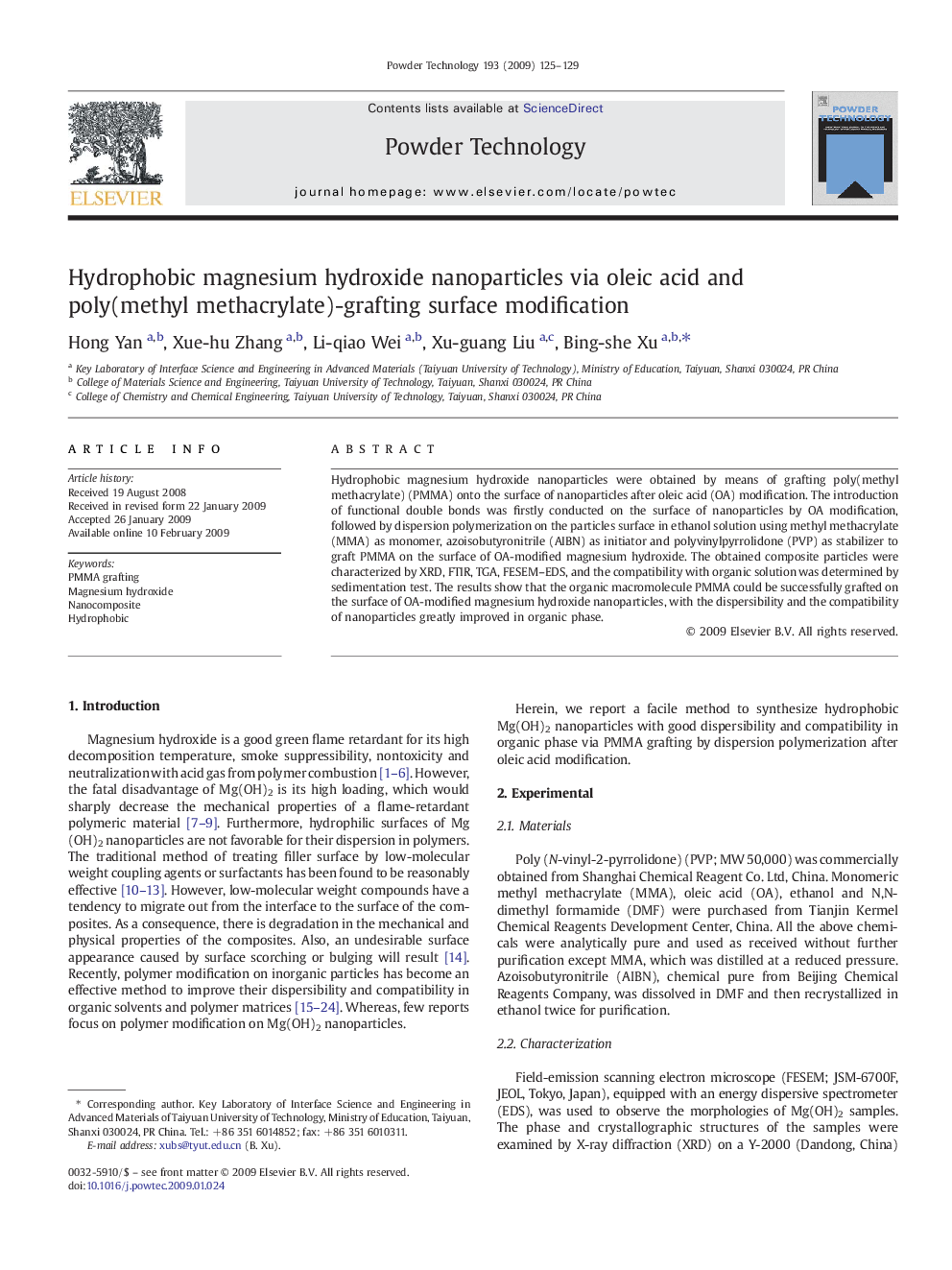| Article ID | Journal | Published Year | Pages | File Type |
|---|---|---|---|---|
| 238635 | Powder Technology | 2009 | 5 Pages |
Hydrophobic magnesium hydroxide nanoparticles were obtained by means of grafting poly(methyl methacrylate) (PMMA) onto the surface of nanoparticles after oleic acid (OA) modification. The introduction of functional double bonds was firstly conducted on the surface of nanoparticles by OA modification, followed by dispersion polymerization on the particles surface in ethanol solution using methyl methacrylate (MMA) as monomer, azoisobutyronitrile (AIBN) as initiator and polyvinylpyrrolidone (PVP) as stabilizer to graft PMMA on the surface of OA-modified magnesium hydroxide. The obtained composite particles were characterized by XRD, FTIR, TGA, FESEM–EDS, and the compatibility with organic solution was determined by sedimentation test. The results show that the organic macromolecule PMMA could be successfully grafted on the surface of OA-modified magnesium hydroxide nanoparticles, with the dispersibility and the compatibility of nanoparticles greatly improved in organic phase.
Graphical abstractA facile surface modification was used to obtain hydrophobic magnesium hydroxide nanoparticles via PMMA grafting by dispersion polymerization after oleic acid modification. Surface modified nanoparticles could float over water for 30 days and homogeneously disperse in the liquid paraffin with no noticeable sedimentation for 2 weeks.Figure optionsDownload full-size imageDownload as PowerPoint slide
